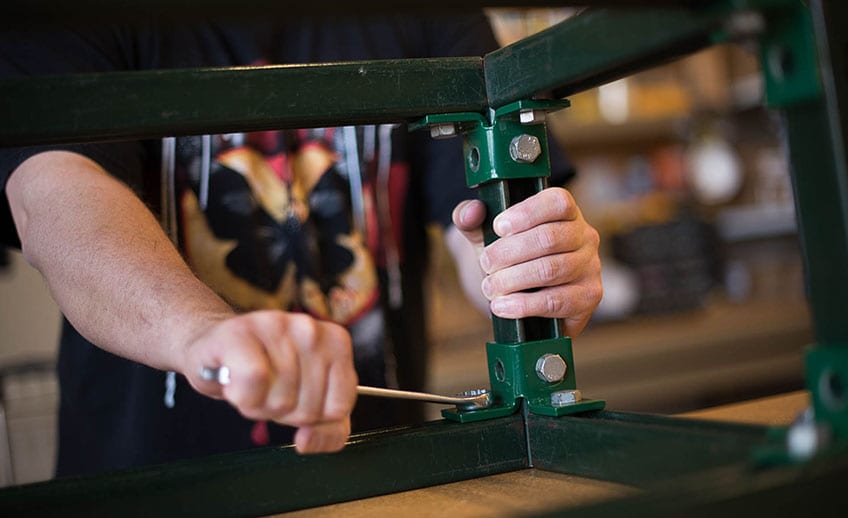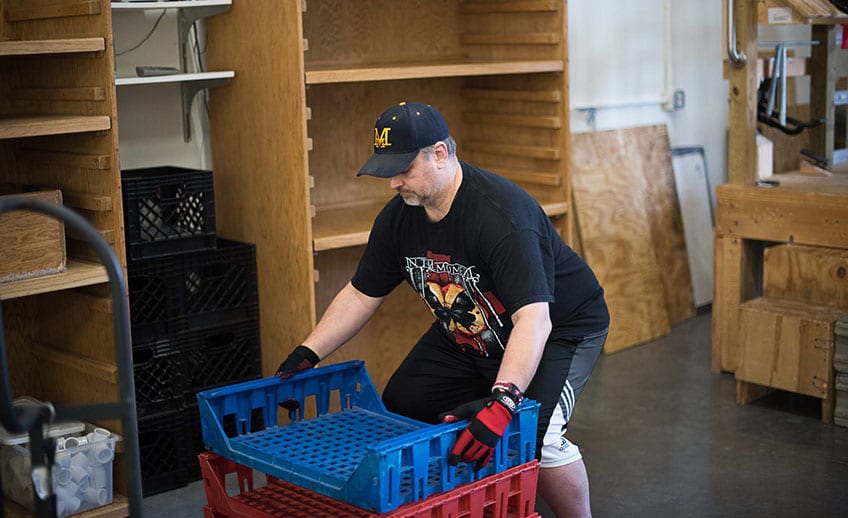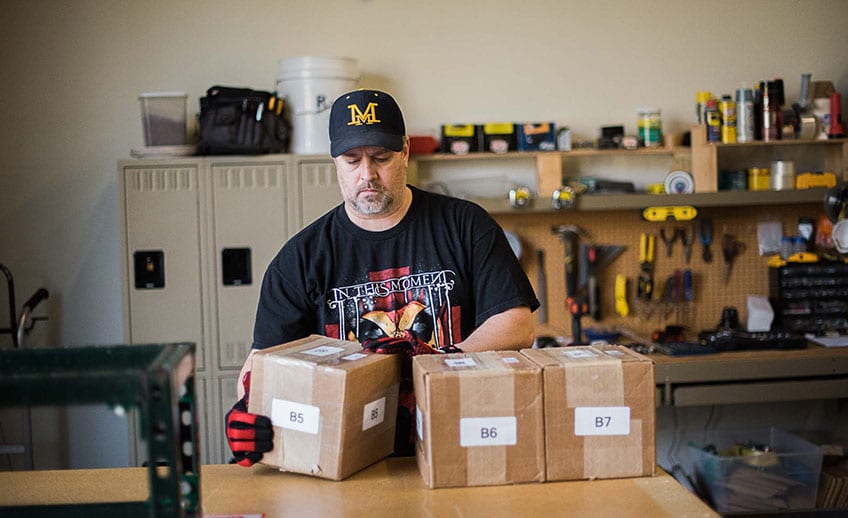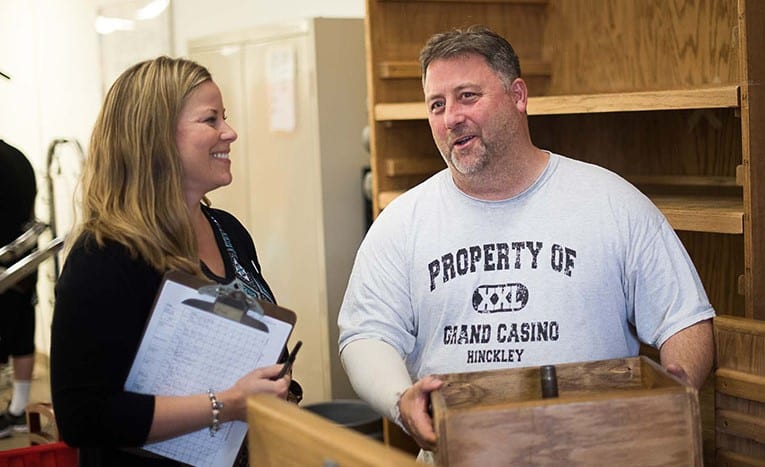The goal of Work Hardening is to simulate the intensity of real work. Therefore, your program will usually increase from a minimum of 2 hours per session, up to a maximum of 8 hours per session. We often increase to 5 days per week in the last week of the program. Sometimes, full days aren’t needed, especially if your work doesn’t require constant physical activity, or if you are supplementing Work Hardening with part-time work. Your Work Hardening Team will plan your program WITH you to design the right combination of hours and days per week.
How Long is a Typical Work Hardening Program?
Your Work Hardening team works with YOU to identify goals and barriers and develop a comprehensive plan to help get you back to work. In some cases, a short 2-3 week Work Hardening program is enough to put the “finishing touches” on your physical rehabilitation. The goal of this shorter program is to improve strength, endurance, and confidence so that you’re physically and mentally ready to jump back into the job. If you’ve been off work for a long time, have a complicated injury, or have been experiencing chronic pain, the program can be as long as 6-10+ weeks. We will plan your program together to make sure it works for you.
Work Hardening – What Exactly Will I Do?
Most people who are referred for Work Hardening have physical barriers that prevent them from reaching their work goals. Examples of these are stiffness, weakness, poor balance, or poor endurance. We stress general fitness, endurance, and work simulation, as well as specific muscle and joint work as needed. The exact combination of these physical restoration elements is customized for each client. Work simulation is one of the most important elements of your rehabilitation, and is something you may not have experienced in your previous physical therapy sessions.
In addition, many clients who have been off work for a long period of time are struggling with non-physical issues such as ongoing pain limiting their function, fear, anxiety, and even anger. If you are experiencing these challenges, we can help. In addition to all the same physical conditioning and job simulation activities, we use an evidence-based, neuroscience approach that involves pain neuroscience education (PNE) and progressive exposure to activities identified as painful/problematic. Our staff is specifically trained to distinguish between “hurt” and “harm” and we will help you know when it’s safe to work through symptoms, and how to use your body more effectively. We find that this approach of gradual exposure to painful activities has great success with long-lasting pain syndromes or fear of return to function. Most clients experience a significant increase in ability to work, even if their symptoms don’t completely go away.
What is the Work Hardening Evaluation?
Before beginning the program, each client participates in a 2-hour evaluation. We obtain a thorough injury history, work history, psychosocial screening and baseline functional assessment covering lifting, pushing, pulling, carrying, upper extremity function, and body position capabilities. During this comprehensive evaluation, we get to know your job-related goals, and we will help you identify barriers to successful return to work. We work together with you, your physician, and others as needed (e.g., QRC or disability case manager) to develop a custom program. Saunders Work Hardening teams customize the length of the program based on the results of your evaluation, availability of light or modified duty, and program goals. If you are currently working, but with restrictions, we structure the program to supplement what you do on the job.




